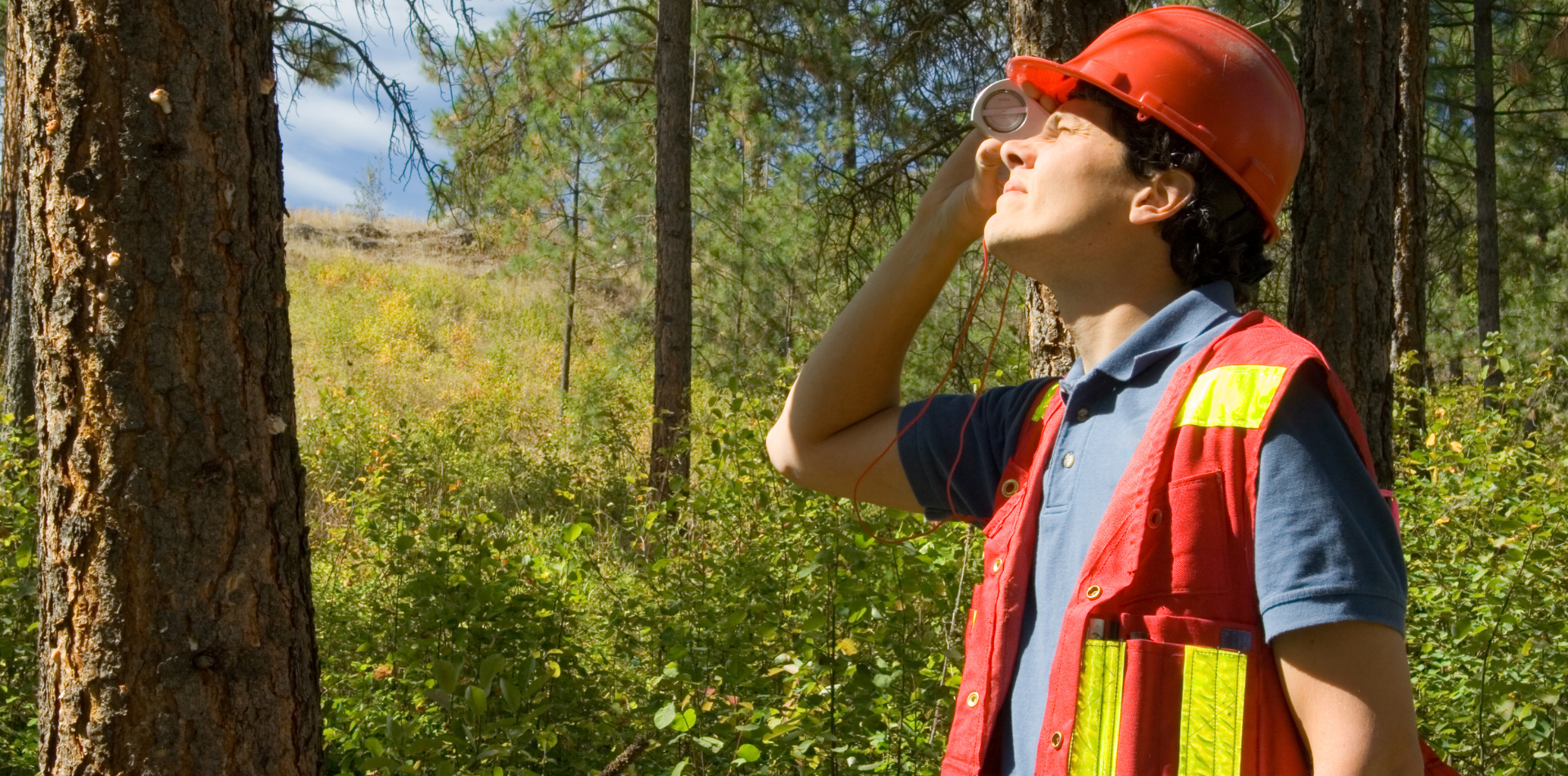What are the benefits of using an Arborist
Benefits of Hiring an Arborist

If you're considering hiring an arborist, it's important to understand what to look for to ensure that you choose a qualified and reliable professional.
Here are some essential things you must know before hiring an arborist:
Certification:
Arborist certification is a critical factor to consider when selecting a professional to manage, care for, or assess the health of trees. Certification by a reputable organisation serves as a benchmark for expertise and professionalism in the field of arboriculture.
1. What is Arborist Certification?
- Standard of Excellence: Arborist certification is a voluntary process through which an individual demonstrates a specific level of competence in the field of arboriculture. It involves passing an exam that covers a wide range of topics related to tree care, including tree biology, diagnosis, maintenance practices, safety, and ethics.
- Continuing Education: Certified arborists are required to participate in continuing education to maintain their certification. This ensures that they stay up-to-date with the latest techniques, technologies, and research in arboriculture.
2. Benefits of Hiring a Certified Arborist
- Expertise in Tree Care: Certified arborists possess a thorough understanding of tree physiology, pathology, and the needs of different tree species. This knowledge is essential for diagnosing problems accurately and prescribing appropriate treatments.
- Adherence to Best Practices: Certification implies adherence to industry-accepted best practices and ethical standards, which promote the health of the tree and safety of the public and property.
- Safety Compliance: Certified arborists are trained in the safe operation of equipment and in safety practices that minimise the risk of injury to people and damage to property.
- Quality of Service: Engaging a certified arborist increases the likelihood of receiving high-quality, reliable tree care services.
3. How to Verify an Arborist’s Certification
- Check with Issuing Organisations: Potential clients can verify an arborist’s certification status by checking with the issuing organisation, which maintains a database of current certified arborists.
- Look for ISA Certification Seal: Certified arborists are often permitted to use the ISA certification logo on their business cards, websites, and promotional materials.
4. Types of Arborist Certifications
- Certified Arborist: This basic certification covers a broad range of fundamental arboricultural knowledge.
- Specialty Certifications: Beyond the general certification, there are specialties such as Tree Worker Climber Specialist, Tree Worker Aerial Lift Specialist, Utility Specialist (focused on managing trees around power lines), and Council Specialist (focused on managing urban trees).
- Level 5 Arborist: The highest level of certification available from ISA, requiring extensive experience and knowledge in a wide range of arboriculture topics.
5. Choosing the Right Arborist
- Assess Your Needs: Depending on the specific needs—whether it's tree pruning, removal, health assessment, or emergency care—selecting an arborist with the appropriate certification and experience is crucial.
- Request References and Past Work: It's advisable to ask for references or examples of past work to ensure the arborist's capabilities align with your project needs.
- Get Multiple Estimates: For significant work, obtaining estimates from several certified arborists can provide comparative insights into the scope, cost, and approach to the project.
Selecting a certified arborist is essential for anyone looking to ensure the health and safety of their trees. Certification is a mark of professionalism that guarantees the arborist has the necessary skills and is committed to following the best practices of the profession.
Insurance:
Arborist insurance is an essential aspect of professional tree care services. Ensuring that an arborist has the appropriate insurance coverage—specifically liability insurance and workers' compensation insurance—provides a layer of financial protection and peace of mind for both the property owner and the service provider.
1. Liability Insurance
- Purpose and Importance: Liability insurance protects against claims resulting from injuries and property damage to others. For arborists, this is crucial because tree care work can be hazardous. Falling branches, malfunctioning equipment, or accidents can cause significant damage to property or even injure bystanders.
- Coverage Details: This type of insurance typically covers legal fees, medical expenses, and damages awarded in a lawsuit, ensuring that the property owner is not held financially responsible if an incident occurs on their property.
2. Workers' Compensation Insurance
- Purpose and Importance: Workers' compensation insurance is designed to cover injuries that employees sustain while on the job. Arboriculture can be particularly risky, with potential falls, cuts, and other injuries. This insurance ensures that workers receive medical care and compensation for a portion of the income they lose while they are unable to work.
- Benefits to the Property Owner: Having workers' compensation insurance removes the liability from the property owner for any injuries that arborists or their employees might incur while working on their property. Without this insurance, a property owner could potentially face significant legal and financial repercussions if a worker is injured on their premises.
3. Why Insurance is Critical in Arboriculture
- Risk of High-Cost Incidents: Given the nature of the work, which often involves heavy lifting, heights, and powerful machinery, the potential for high-cost accidents is significant. Insurance acts as a safeguard that helps ensure that these costs do not fall on the property owner.
- Professionalism and Compliance: Carrying proper insurance is also a sign of professionalism. It indicates that the arborist adheres to industry standards and regulations, providing services responsibly.
4. Verifying Insurance
- Ask for Proof of Insurance: It is advisable for property owners to request and verify proof of both liability and workers' compensation insurance before hiring an arborist. This proof should come directly from the insurance provider to ensure its validity.
- Ensure Adequate Coverage: The level of insurance should be adequate to cover the scale of work being performed. For large-scale or high-risk projects, higher coverage limits may be necessary to provide sufficient protection.
5. Common Misunderstandings
- Assuming All Arborists are Insured: Not all arborists carry the necessary insurance, especially those who are self-employed or work for smaller companies. Always verify insurance status and avoid assuming it is in place.
- Underestimating the Importance of Coverage: Skipping the verification of insurance to save time or because the service provider seems trustworthy can lead to significant financial exposure if an accident occurs.
6. Choosing the Right Arborist
- Insurance as a Selection Criterion: When selecting an arborist, insurance coverage should be one of the key criteria. This not only protects the property owner but also indicates that the arborist operates a legitimate, conscientious business.
- Balancing Cost and Safety: While uninsured arborists might offer lower quotes for their services, the potential financial and legal ramifications of an uninsured accident can far outweigh any initial savings.
The right insurance coverage is indispensable in arboriculture, safeguarding the interests of both the property owner and the workers. Property owners should prioritize hiring insured arborists to ensure that tree care tasks are carried out safely, professionally, and with financial accountability.
Experience:
Arborist experience is a crucial aspect when considering hiring a professional for tree care. The complexities and variety in types of tree work demand specific skills and knowledge that only come with experience.
1. Importance of Experience in Arboriculture
- Understanding of Tree Species: Experienced arborists have a deep understanding of different tree species and their specific needs. Each species has unique characteristics and requirements in terms of pruning, disease management, soil preference, and tolerance to environmental conditions.
- Problem Diagnosis and Treatment: With experience comes the ability to quickly and accurately diagnose problems, whether they are related to pests, diseases, or environmental stress factors. Experienced arborists are better equipped to recommend effective treatment options and preventive measures.
- Safety and Efficiency: Tree work can be dangerous. Experienced arborists are likely to have better developed safety protocols and can perform work more efficiently due to familiarity with various scenarios and challenges that can arise during tree care operations.
2. Types of Experience Relevant to Tree Care
- Pruning and Maintenance: Experience in pruning not only involves knowing where and how cuts should be made but also understanding how a tree will grow in the future. This foresight minimizes the risk of future problems.
- Tree Removal: Experienced arborists understand the complexities involved in safely removing trees, especially in challenging environments like close to buildings or power lines.
- Disease and Pest Management: Knowledge of local pests and diseases, and the most effective treatments, is essential. Experienced arborists can also recognize early signs of infestation or disease that might be overlooked by less experienced individuals.
- Emergency Care and Disaster Response: Trees damaged by storms or other events require immediate attention to prevent further damage and ensure public safety. Experienced arborists can make rapid assessments and decisions under pressure.
3. Questions to Ask an Arborist About Their Experience
- Specific Experience: "Can you describe your experience with the specific type of tree work I need, such as pruning mature oak trees or treating birch tree diseases?"
- Years in the Field: "How many years have you been working as a professional arborist?"
- Challenging Projects: "What are some of the most challenging projects you have handled?"
- Training and Continuing Education: "What specialized training have you completed, and how do you keep up with changes in arboriculture?"
- References and Portfolio: "Can you provide references or a portfolio of previous work similar to what I need?"
4. Benefits of Hiring an Experienced Arborist
- Higher Quality of Work: An experienced arborist is likely to perform higher quality work that meets both the aesthetic and health needs of trees.
- Long-term Health of Trees: Proper tree care by an experienced professional promotes the long-term health and vitality of trees, which can enhance property value and reduce the need for future interventions.
- Cost-Effectiveness: While the initial cost may be higher when hiring an experienced arborist, the long-term savings from proper tree care and avoided damage can be significant.
5. Evaluating Experience and Expertise
- Certifications and Qualifications: Experience should be complemented by professional certifications, such as those from the ISA, which indicate that the arborist has met certain industry standards.
- Insurance and Licensing: Experience should also be supported by the appropriate business licensing and insurance coverage, confirming that the arborist operates professionally and responsibly.
The experience of an arborist is a fundamental criterion to consider when needing tree care services. It ensures that the work will be done safely, effectively, and with an understanding of both the immediate and long-term impacts on the tree and its surrounding environment.
Equipment:
The equipment used by an arborist is critical for performing tree care tasks safely and effectively. A professional arborist's toolkit not only includes specialised tools for cutting and trimming but also essential safety gear to protect the arborist and others during the job.
1. Tree Climbing and Access Equipment
- Climbing Ropes and Harnesses: Professional arborists use high-quality climbing ropes and harnesses designed specifically for tree work. These tools ensure that arborists can ascend and descend trees safely and position themselves securely while working.
- Aerial Lifts and Ladders: For taller trees or when climbing is impractical or unsafe, arborists may use aerial lifts, cherry pickers, or ladders to reach high branches. This equipment needs to be operated by trained personnel to ensure safety.
2. Cutting Tools
- Chainsaws: Essential for cutting larger branches and performing tree removals, chainsaws must be well-maintained and equipped with safety features like kickback protection.
- Hand Saws and Pruners: For finer, more precise cuts, especially in pruning, arborists use a variety of hand saws and pruners. These tools allow for selective cutting that promotes healthy growth without damaging the tree.
- Pole Saws and Loppers: These tools extend the reach of an arborist, allowing them to trim branches that are high off the ground without the need for climbing.
3. Safety Equipment
- Helmets with Face Shields or Safety Goggles: Protecting the head and eyes from falling debris and the occasional branch snap-back is crucial. Helmets often come equipped with visors or safety goggles.
- Protective Clothing: Arborists wear heavy-duty gloves to protect their hands from sharp branches and saw cuts, as well as padded clothing to minimize injury from falls or scrapes.
- Ear Protection: The use of chainsaws and other loud equipment necessitates ear protection to prevent hearing damage.
- Fall Protection Gear: Beyond standard climbing harnesses, arborists also use various types of fall protection gear, including safety lines and anchor points, to prevent falls from height.
4. Stump Removal Equipment
- Stump Grinders: After a tree is removed, stump grinders are used to grind down the leftover stump below the surface of the ground, which helps prevent tripping hazards and frees up space for replanting.
5. Miscellaneous Tools
- Wood Chippers: These machines are used to reduce tree limbs and brush into chips, which can be removed from the site more easily or used as mulch.
- Utility Vehicles: These vehicles are used to transport heavy equipment and debris, which is especially useful in larger or more remote job sites.
6. Importance of Proper Equipment
- Efficiency and Effectiveness: The right equipment allows arborists to perform tasks more efficiently and effectively, reducing the time and labor involved in tree care.
- Safety: Proper equipment significantly reduces the risk of accidents and injuries to arborists and bystanders.
- Quality of Care: Using appropriate tools helps ensure that tree care practices are conducted in a way that promotes the health and longevity of the trees.
7. Evaluating an Arborist’s Equipment
- Maintenance and Condition: When hiring an arborist, it’s a good idea to inquire about the maintenance and condition of their equipment. Well-maintained tools are less likely to fail and more likely to perform as expected.
- Suitability for the Job: Ensure that the arborist has access to and expertise with the specific type of equipment needed for your particular job. This might include specialized tools for dealing with large trees, confined spaces, or unusual conditions.
When selecting an arborist, it's important to consider not only their qualifications and experience but also the quality and suitability of their equipment. This consideration helps ensure that the tree care performed is safe, efficient, and beneficial for the trees and the surrounding environment.
Written estimate:
Requesting a written estimate from an arborist before commencing any tree care work is an important step in ensuring transparency, accountability, and clarity in the services to be provided. A detailed written estimate protects both the property owner and the arborist, establishing clear expectations and helping to avoid potential misunderstandings or disputes.
1. Components of a Written Estimate
- Detailed Description of Services: The estimate should clearly outline all the tasks that the arborist plans to perform. Whether it’s pruning, tree removal, stump grinding, or disease treatment, each service should be listed along with the specifics of how it will be carried out.
- Cost Breakdown: The estimate should provide a detailed breakdown of the costs associated with each aspect of the job. This includes labor, equipment usage, and any additional charges such as for disposal of debris or application of treatments.
- Timeline for Completion: The estimate should include a start and end date for the work. This helps the property owner plan accordingly and sets expectations for how long the work will impact their property.
- Payment Terms: Details regarding the payment schedule, including any deposit required, payment installments, and the final payment due date, should be explicitly stated.
- Potential Additional Costs: It's important for the estimate to mention any scenarios that might lead to additional costs. This could include unforeseen complications like discovering hidden disease or pest infestations that require additional treatment.
2. Benefits of a Written Estimate
- Clarity and Transparency: A written estimate provides a clear framework of what the job entails and what it will cost, which helps in preventing billing surprises and clarifying the scope of work.
- Comparison Shopping: With a detailed written estimate, property owners can compare services and costs from different arborists more effectively, ensuring they get the best value for the services they need.
- Legal Protection: In the event of a dispute or if the work does not meet the agreed-upon specifications, a written estimate serves as a legal document that outlines the expectations and agreements between both parties.
3. Evaluating the Estimate
- Comprehensiveness: The estimate should cover all aspects of the job, leaving no major task unmentioned. This ensures that all expected work is accounted for in the pricing.
- Professionalism: The format, detail, and clarity of the written estimate can also reflect the professionalism of the arborist. A well-prepared estimate suggests a thorough and professional approach to the job.
- Certifications and Insurance Mentioned: While not always included, it can be helpful if the estimate also mentions the arborist’s certifications and insurance coverage, reaffirming their qualifications and risk management.
4. Questions to Ask When Receiving an Estimate
- Ask about any unclear charges: If any part of the estimate is unclear, it’s important to ask for clarification to avoid any surprises.
- Confirm what is not included: Sometimes, what is not included in an estimate is as important as what is included. Make sure to understand any services or costs that might be considered additional.
- Timeline flexibility: Discuss how changes to the timeline would be handled, in case the work is delayed due to weather or other unforeseen circumstances.
5. Following Up After Receiving an Estimate
- Written Agreement: Once the estimate is agreed upon, it’s wise to sign a formal contract or agreement that includes the estimate details. This provides a legally binding document that can be referred to if issues arise during or after the completion of the work.
A detailed written estimate is a foundational part of hiring an arborist. It ensures that all parties are on the same page regarding the scope, cost, and timeline of the project, thereby helping to manage expectations and foster a smooth working relationship. Always ensure that you have thoroughly reviewed and understood the estimate before work begins.
By considering these factors, you can make an informed decision when hiring an arborist and ensure that you receive high-quality tree care services.
Ready to work with KAPTOL GROUP?
Let's connect! We’re here to help.
Send us a message and we’ll be in touch.
Or give us a call today at 0438 248 833
Agency Contact Form
More Marketing Tips, Tricks & Tools




